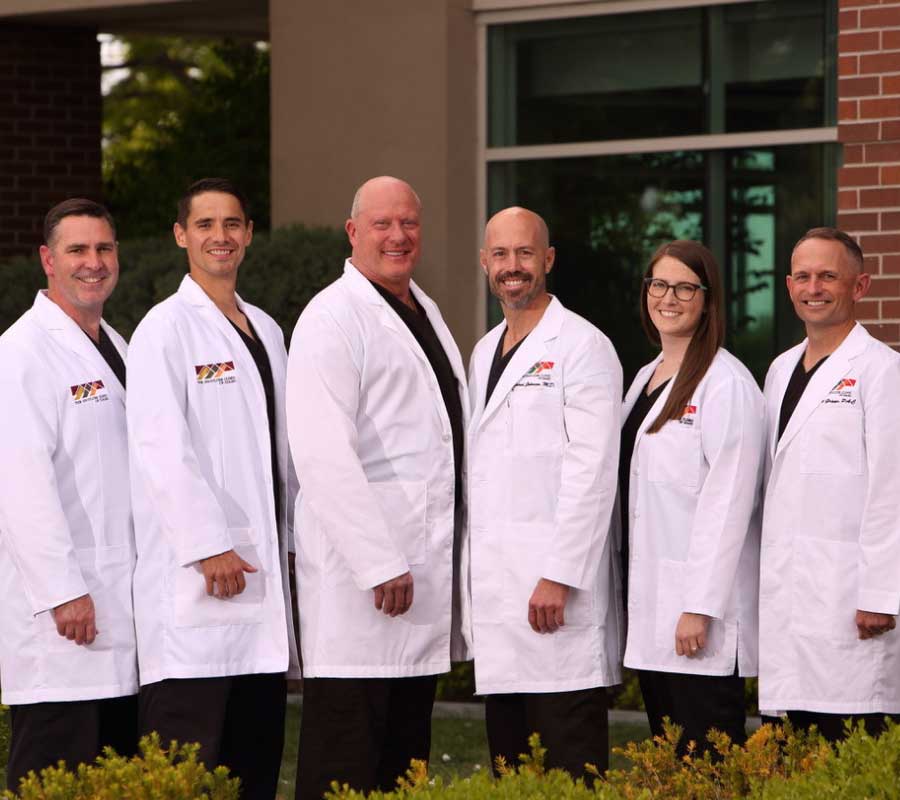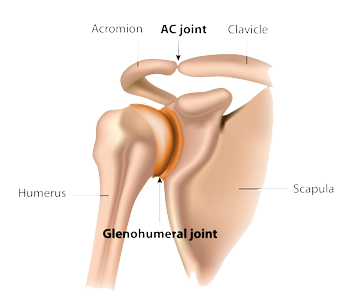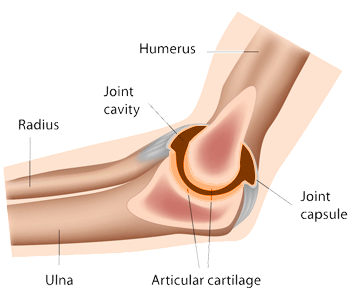Biceps Tendon Injury Specialists

Are you an athlete who participates in sports that involve heavy overhead lifting? If so, you may be at risk of tearing your biceps tendon. A biceps tear can occur from repetitive overuse, a fall, heavy lifting or degeneration of the tendon over time. The biceps tendon injury specialists at the Shoulder Clinic of Idaho provide diagnosis and both surgical and nonsurgical treatment options for patients in the Boise area who have suffered a biceps tendon injury. Contact the Shoulder Clinic of Idaho team today!
What is a biceps tendon injury?
The biceps muscle is located at the front of the upper arm and the front of the shoulder. This important muscle is used countless times a day and relied on for a large and diverse range of activities. The biceps muscle and biceps tendon flex the elbow and rotate the forearm and wrist. The upper part of the bicep muscle is attached to the shoulder with two tendons: the long head of the biceps tendon and the short head of the biceps tendon. The long head of the biceps tendon attaches directly to the superior labrum and passes inside the shoulder joint. The short head of the biceps tendon attaches to the coracoid process on the shoulder blade (also known as the scapula). The lower part of the bicep muscle attaches just past the elbow on the forearm at the radial tuberosity. A biceps tendon injury occurs when the tendon frays or tears away from one of its attachment sites. The specialists at The Shoulder Clinic of Idaho help patients in Boise, Meridian, Nampa, and the surrounding communities of the Treasure Valley, return to their normal activities following a biceps tendon injury.
What is biceps tendinitis?
Tendinitis means inflammation of the tendon; or more specifically, when the long head (upper part) of the biceps tendon is irritated and causes pain. This cord-like structure attaches the bicep muscle to the superior labrum and the bones of the shoulder. Biceps tendinitis occurs most commonly in athletes who overuse the muscle or place strain on the muscle repeatedly. Biceps tendinitis pain is typically felt in the front of the shoulder where the tendon is travels near the rotator cuff tendons prior to inserting on the superior labrum inside the shoulder.
How is biceps tendinitis related to a biceps tendon injury?
Biceps tendinitis often occurs in conjunction with other shoulder injuries, usually with damage to the biceps tendon. Tendinitis pain can be felt in the shoulder or at the elbow, but not usually at the same time. Because of the close relationship between the biceps tendon and the rotator cuff tendons, it is not unusual to have both biceps tendinitis and rotator cuff tendinitis at the same time. Any time the biceps tendon is over stressed or damaged, tendinitis may occur.
How do I know if I have a biceps tendon injury?
There are several warning signs associated with biceps tendinitis and a biceps tendon injury. Tears of the long head of the biceps tendon (the tendon that attaches inside the shoulder) are most common, where tears of the short head of the biceps tendon, seldom happen. Common symptoms of a biceps tendon injury include:
- Sudden, intense pain in the upper arm or site of the tear. The pain may resolve in a few days.
- Hearing or feeling a “pop” when a biceps tendon tears.
- Cramping in the biceps muscle, at the front of the shoulder and in the front of the arm.
- Pain and tenderness at the shoulder and/or the elbow.
- Bruising and swelling.
- A physical change in the front of the arm, sometimes a bulge due to the fact the tendon is no longer holding the muscle in place. This is commonly called a “Popeye muscle.”
- Weakness in the arm.
- Decreased range of motion in the shoulder and/or the elbow.
How is a biceps tendon injury diagnosed?
Patients in Boise, Meridian, Nampa, and the surrounding communities of the Treasure Valley, have access to the shoulder specialists at The Shoulder Clinic of Idaho. If a biceps tendon injury is suspected, they will perform a physical exam and possibly an MRI to reveal a biceps tendon or rotator cuff tendon tear. An MRI scan can confirm the diagnosis and show the extent of the tendon injury, as well as any other injuries within the shoulder joint.
What is the treatment for a biceps tendon injury?
Non-Surgical Treatment
For biceps tendon injuries that are minor and have not torn completely, treatment with ice, rest and anti-inflammatory medication may be prescribedTendinitis and partial tendon ruptures may not require surgery; some tendon tears may be associated with rotator cuff tears. Patients are advised to avoid strenuous activity, sports or heavy lifting, until the tendon tear heals completely. Physical therapy may then be recommended to regain strength and flexibility of the shoulder.
Surgical Treatment
Biceps tendon injuries do not always require surgical intervention. The orthopedic shoulder and elbow specialists at The Shoulder Clinic of Idaho will discuss options based on patient age, activity level and severity of the injury. Tendon tears that occur near the elbow almost always require surgery and should occur within a few weeks of the injury. Biceps tendon tears that are identified late may still be repaired in certain situations. The shoulder and elbow specialists at The Shoulder Clinic of Idaho, have special training in complex problems and can help with these types of situations. Tears at the shoulder can be repaired with minimally invasive surgery, or arthroscopic surgery, using small incisions to re-anchor the torn tendon back to the bone. If only a small part of the tendon is torn, a simple smoothing (debridement) of the torn fibers may be all that is required. If a large portion of the tendon is torn, the damaged part may be removed from inside the shoulder joint and then the remaining tendon would be attached to the upper arm bone (humerus) so that the tendon may work normally again. This procedure is called biceps tenodesis.
For more information on biceps tendon injuries and biceps tendinitis, please contact The Shoulder Clinic of Idaho, serving Boise, Meridian, Nampa, and the surrounding communities of the Treasure Valley.



